Coconut or Nariyal Chutney is a delicious vegan Indian dipping sauce made with coconut. This chutney is served as a side for Dosa and Idli mainly. It's quick and easy to make!
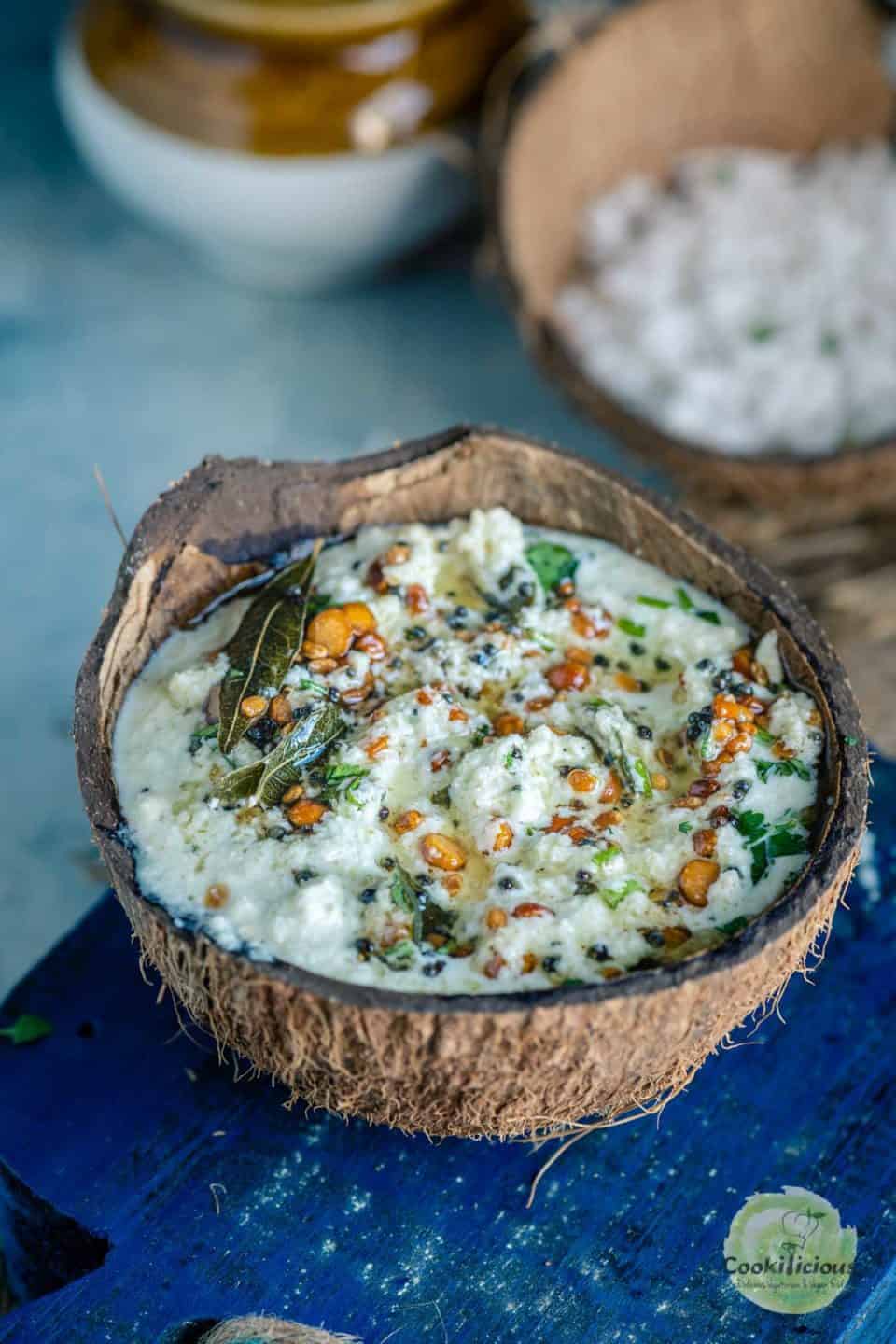
Jump to:
What is chutney
Chutney is a sweet or savory condiment or accompaniment from India. Every home, state, region has a collection of chutney recipes that they swear by. They are often served as a side with a meal to bring out the flavors and also to ensure a balanced meal. Chutney can be made with many ingredients - fruits, vegetables, lentils, greens, herbs, seeds, nuts and some ingredients you would never think of using! It's almost a no-cook recipe if there is no tempering or roasting involved. Many also use leftovers like greens and other veggies, to make a quick chutney.
South India's Coconut Chutney
Coconut chutney is one of the main and basic condiment that's served on a South Indian platter. It's known by different names in different parts of India. It's called Nariyal chutney, Thengai Chutney, Kobbari chutney, Pachadi and even white chutney. There is abundance of coconut in the South of India because it is a coastal region. That is why you will notice it being used extensively in their cuisines.
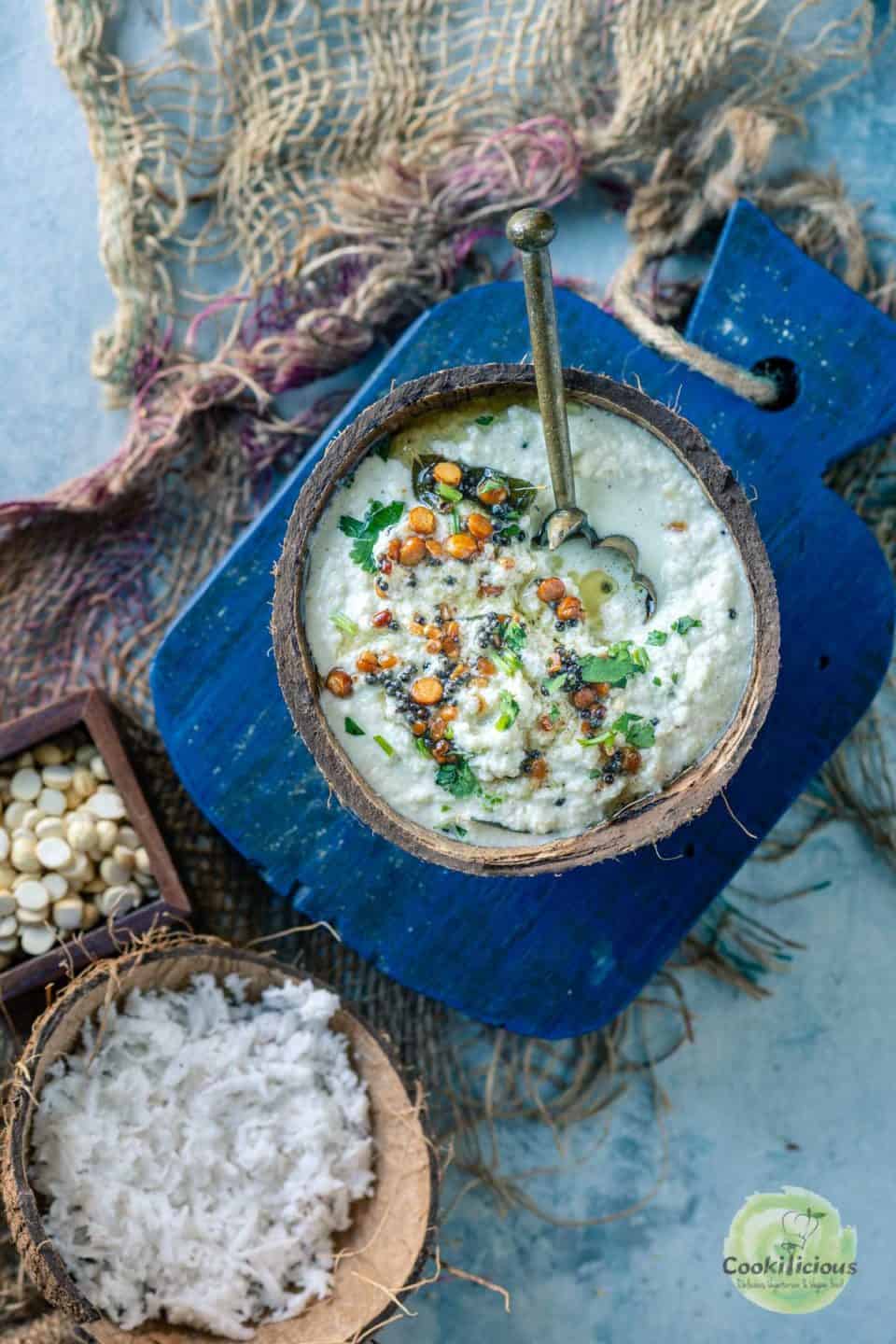
We serve this nariyal chutney with South Indian snacks like Idli, Dosa, Wada, etc. This recipe has been in the family for generations. We still make it the same way.
I remember, my grandma used to grind this in a traditional mortar pestle and the taste of that chutney was unmatchable. No mixer grinder can match that.
This chutney is lusciously white, has a strong flavor of coconut and is mildly spiced. It's an aromatic, delicious and a healthy condiment. It's also the easiest chutney to make!
Nariyal chutney is the best side for dishes like Idli and Dosa because it helps balance the flavors.
Why make this
- This side dish is naturally vegan
- Quick and easy to make
- This is hotel style recipe
- It's almost a no-cook recipe
- Coconut is high in fiber, vitamins and minerals
- Needs very few and basic ingredients
- Best chutney for idli, and dosa
- Can be served as a side with almost anything
Ingredients needed 🧾

Coconut - This is the key ingredient. In India, we use freshly grated coconut. However in the US, frozen coconut
is more easily available and is easy to use because the process to grate fresh coconut is cumbersome.
As alternates, I have also used unsweetened desiccated coconut, shredded coconut, and coconut chunks to make this chutney.
Daliya/Roasted gram/Puttu Kaddalai/Roasted husked black chickpeas - This ingredient is also key to making this nariyal chutney. It helps bind it all together.
It's available in Indian stores and Amazon. Read notes below for substitutions. You can also skip adding it.
Spices, herbs, and lentils- mustard seeds, urad dal, chana dal, green chillies, ginger, asafoetida/hing, curry leaves and cilantro are added to give this chutney its unique flavor.
Want to save this recipe?
How to make it 🔪
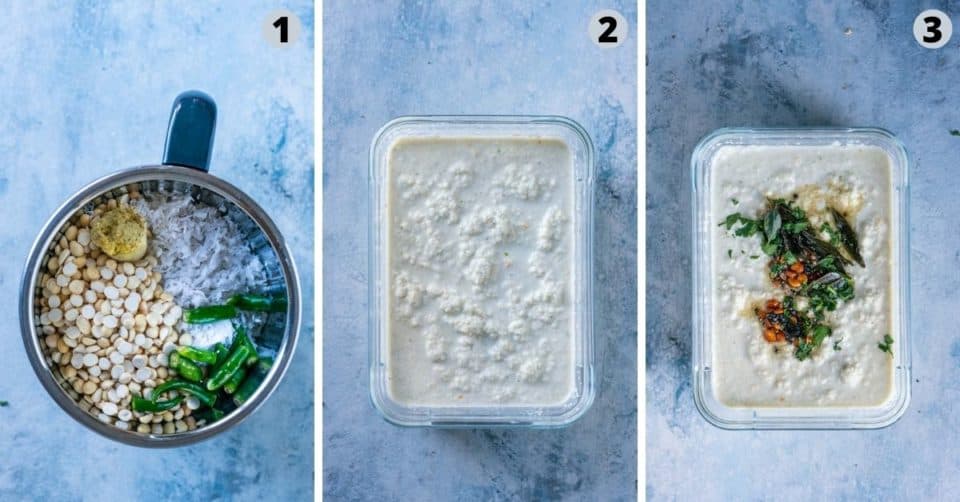
- Transfer grated coconut, puttu kadalai, green chillies, and ginger to a mixer grinder jar.
- Add water to grind to a smooth paste. Scrape the sides as you grind and add more water if needed. Consistency is a personal preference. Transfer to a bowl. Add salt.
- In a tadka pan, add coconut oil, and temper mustard seeds. Once they crackle, add urad seeds, chana dal, and hing. Saute till the urad dal turns light golden.
- Pour this tempering over the chutney. Mix and keep it aside. Garnish it with torn curry leaves and chopped cilantro. Chef Tip - Cover the chutney with a lid immediately after adding tempering over chutney. It gives an amazing smoky flavor to the chutney.
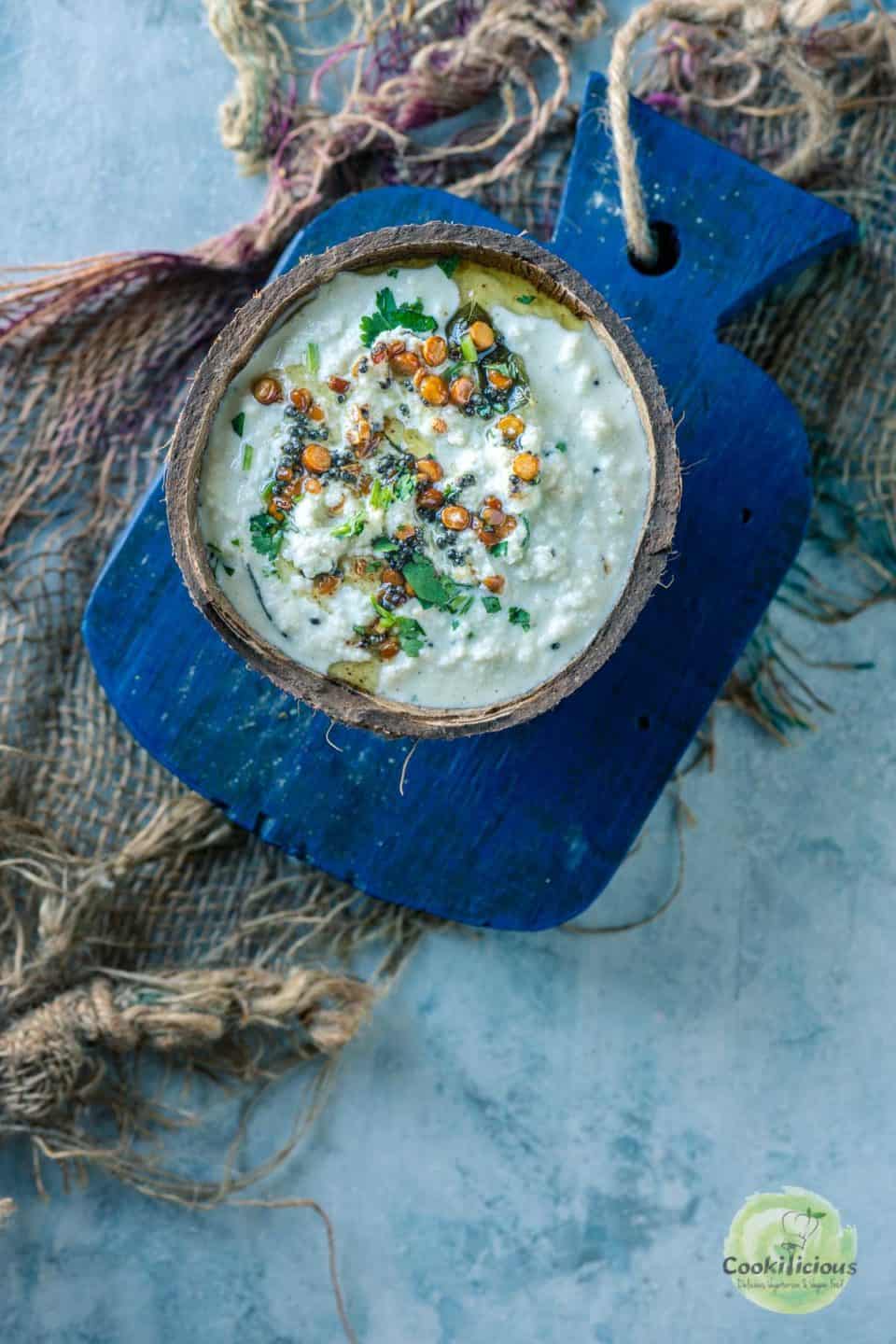
Serving suggestions 🍽
Serve this coconut chutney with Ven Pongal (my favorite), Idli, Dosa, Masala Dosa, Uttapam, Paniyaram, Medu Wada, Lemon Rice and/or Chickpeas Sundal.
You can also serve it as a side to any Indian appetizer/snack or be served as a dip. Some also like to mix it with plain rice and eat.
Top recipe tips 💭
Cilantro can also be added while grinding. If doing so the chutney will be green in color. To make this chutney gluten-free, skip adding asafoetida or hing. Do not over process the chutney while grinding else the coconut will let out oil and make the chutney greasy.
You can also serve the coconut chutney without the tadka. That's how some restaurants serve it and its called white chutney. But I don't skip it as it adds so much more flavor. Use coconut oil to temper, it gives a good enhancing flavor to this Indian chutney. You can also use any neutral cooking oil.
Recipe FAQs 📖
In India, we use freshly grated coconut. As alternates, I have also used unsweetened desiccated coconut
, shredded coconut, and coconut chunks to make this chutney.
There have been many times I have used frozen coconut to make this chutney. Here are some tricks and tips I use to get the right texture.
Thaw the frozen coconut completely before using. If needed, you can also dry roast it for 2 minutes to ensure the excess water evaporates. Also, while grinding, add hot water.
If you do not have daliya/roasted gram dal you can dry roast raw chana dal. Soak it in water for 15-20 minutes, drain and add to the recipe.
Peanuts, almonds, cashews are also a great substitute. If using, there is no need to soak them. You may also skip it completely, but then the water will separate from the coconut.
Instead of green chillies, you can also use serrano peppers, jalapeno or even dried red chillies. Red chillies will give the chutney a red orange color.
Some add garlic, ginger, tamarind, shallots, lemon juice, or yogurt to this chutney. It's a personal preference. But the basic coconut chutney is made without these ingredients.
You can even add some thin coconut milk instead of water while grinding. The consistency of the chutney can be thick or this. It's a personal choice.
Store this chutney in an airtight container. It stays well in the fridge for 5-6 days. In India, due to the temperatures, it can last 2-3 days.
It also freezes well. Whenever, you want to serve it, thaw it in refrigerator for few hours and then leave it on the counter at room temperature for some time.
Do not heat it. Instead, what you can do is, pour some hot water to thin it down a bit. That's because, coconut chutney will thicken a bit as it cools.
Another trick mom used is to prepare the chutney and store it. Before serving, do the tadka. That gives it the freshness.
More condiments or sides
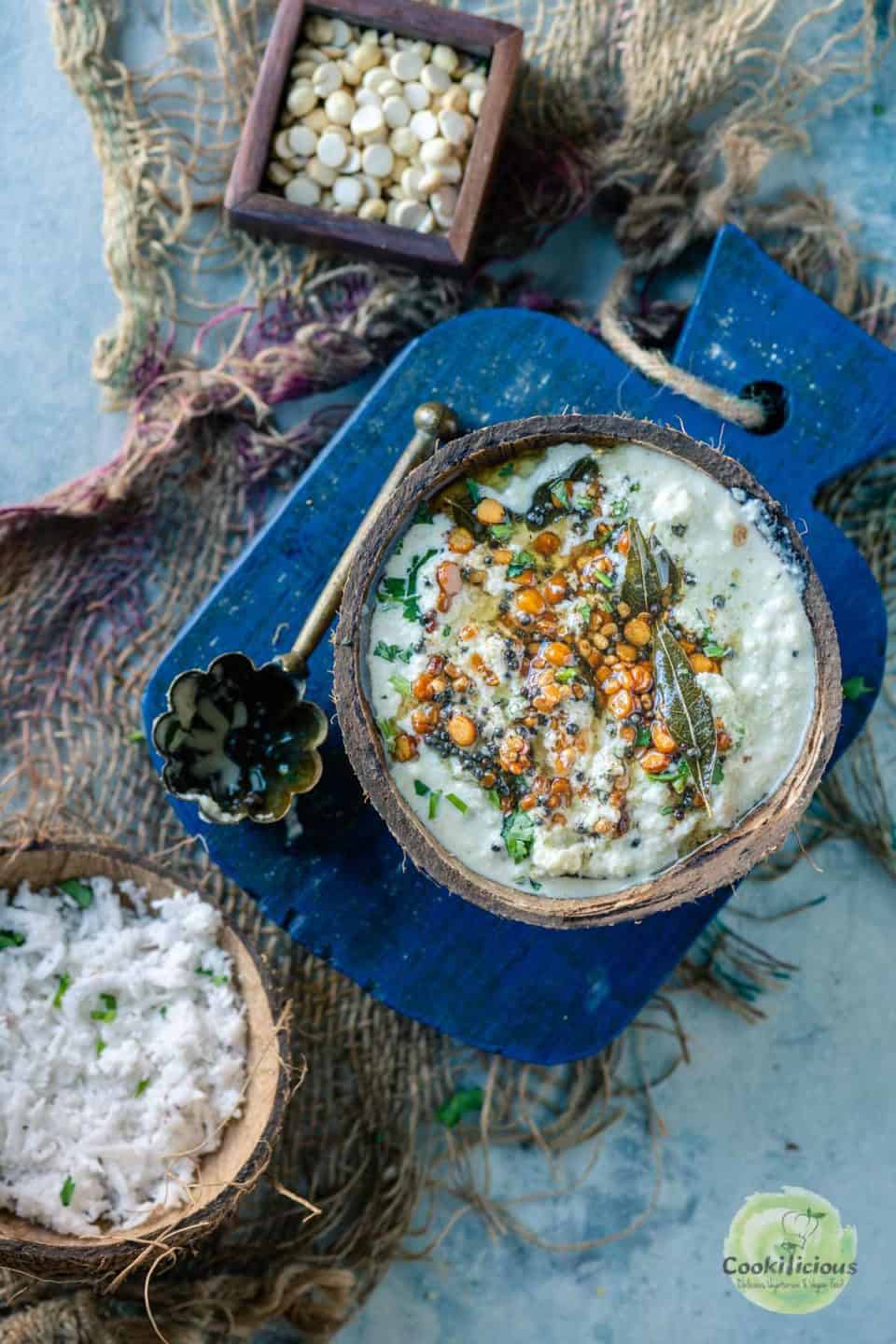
⭐️ Subscribe to the Cookilicious Newsletter and receive new recipes straight to your inbox! You'll receive my FREE Vegan Beginner's guide as a gift. Ready to elevate your cooking game? Purchase my Cookbook - The Essential Vegan Indian Cookbook today!
Recipe 📖
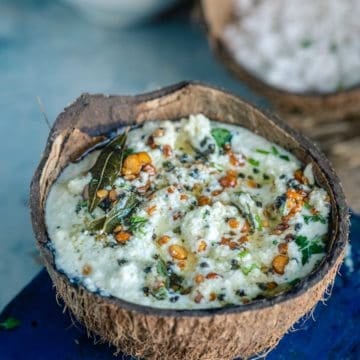
Coconut Chutney Recipe
Equipment
Ingredients
To make a paste
- 2 cups grated coconut
- ⅓ cup roasted gram/daliya/puttu kadalai
- 5 green chillies
- 1 tablespoon ginger paste
- ¾ cup water or thin coconut milk
- salt
For the tadka
- 1 teaspoon cooking oil
- 1 teaspoon mustard seeds
- ¼ teaspoon hing
- 1 tablespoon urad dal
- 1 tablespoon chana dal
Garnish
- 2 tablespoon cilantro
- 5 curry leaves
Instructions
To make a paste
- Transfer grated coconut, puttu kadalai, green chillies, and ginger to a mixer grinder jar.
- Add water to grind to a smooth paste. Scrape the sides as you grind and add more water if needed. Consistency is a personal preference. Transfer to a bowl. Add salt.
For the tadka
- In a tadka pan, add coconut oil, and temper mustard seeds. Once they crackle, add urad seeds, chana dal, and hing. Saute till the urad dal turns light golden.
- Pour this tempering over the chutney. Mix and keep it aside. Garnish it with torn curry leaves and chopped cilantro.
- Cover the chutney with a lid immediately after adding tempering over chutney. It gives an amazing smoky flavor to the chutney.

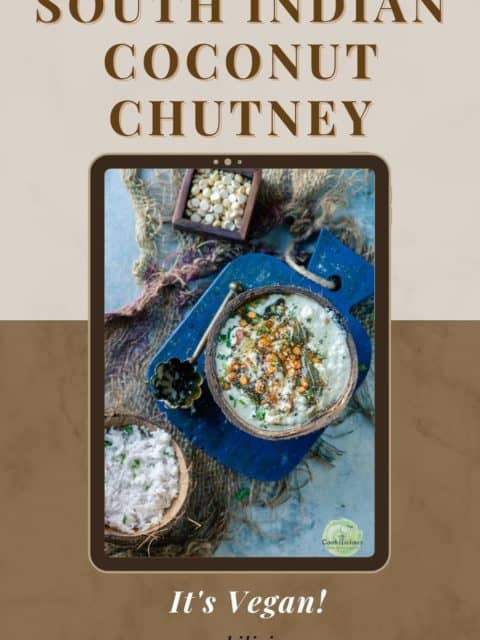
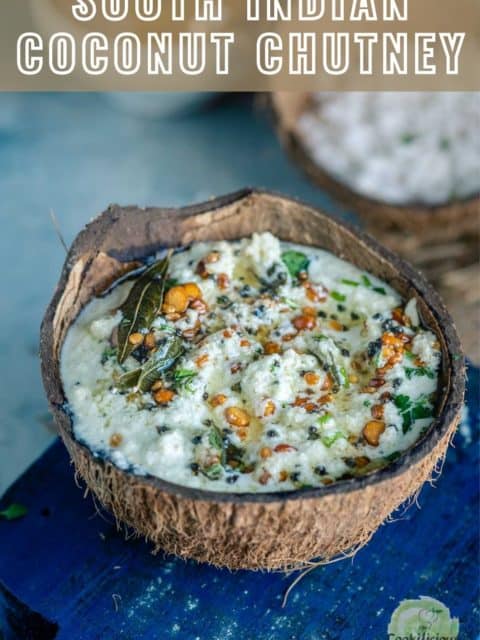
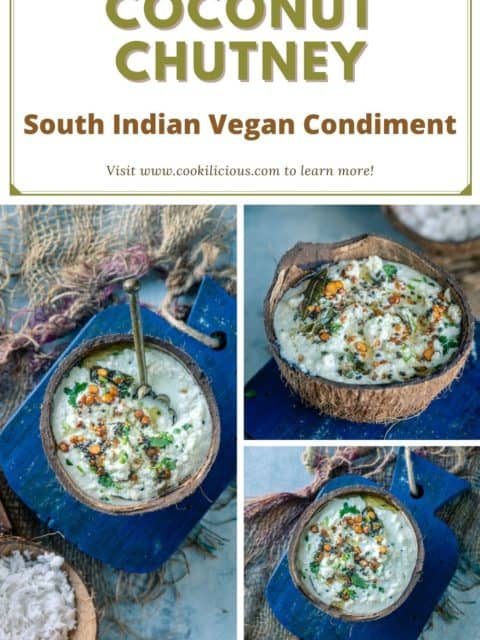
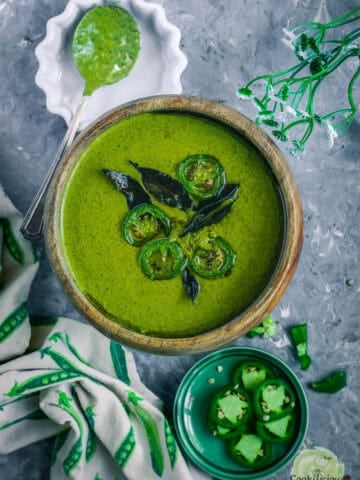
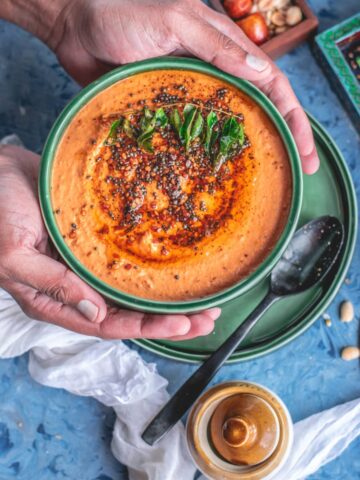

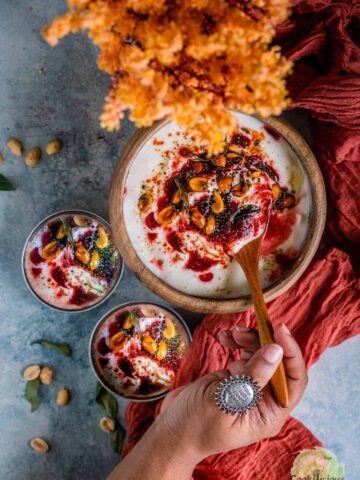
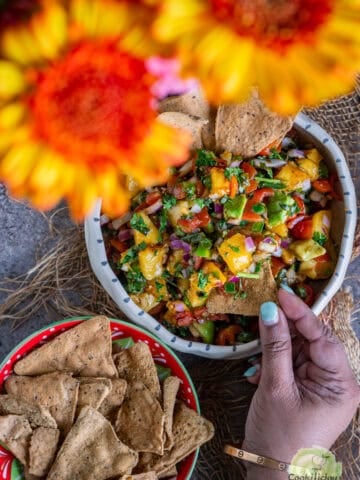
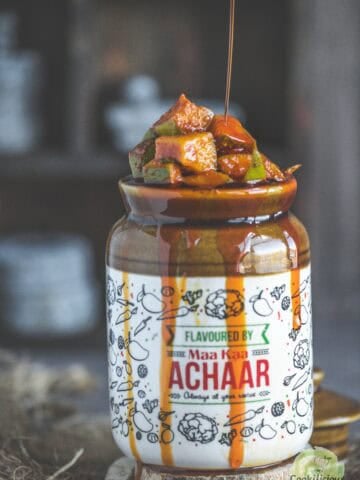
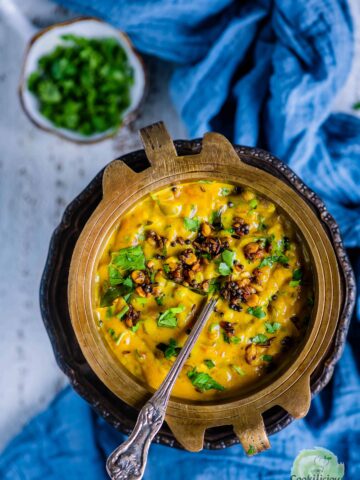
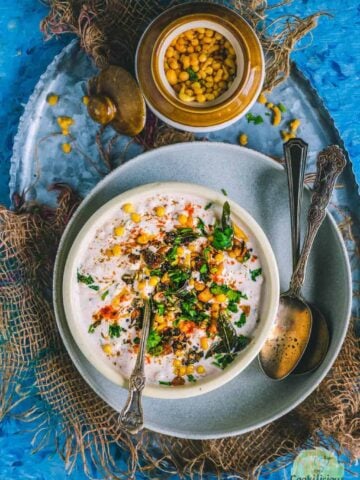
Leave a Reply